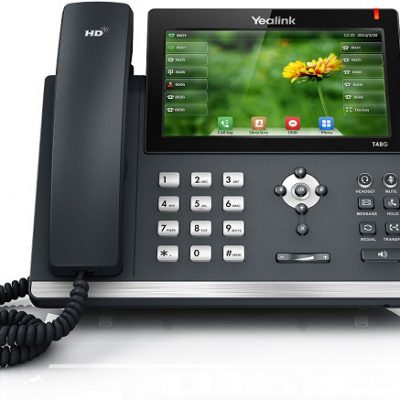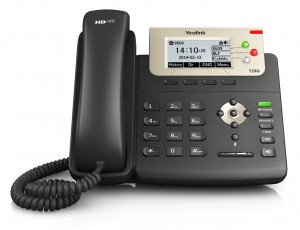PBX (Private Branch Exchange) systems have been the backbone of businesses for decades. These systems allowed businesses to handle internal and external calls, as well as manage multiple phone lines efficiently. However, with the advancements in technology, traditional PBX systems are becoming outdated and costly to maintain. This has led many businesses to consider PBX replacement with VoIP (Voice over Internet Protocol) systems.
In this guide, we will discuss the process of migrating from a PBX system to a VoIP system, the benefits of making this transition, and the steps you need to take for a successful PBX replacement.
Key Takeaways
- PBX systems have been the traditional choice for businesses when managing their incoming and outgoing calls. However, the rise of new technologies has led to the emergence of more advanced and flexible VoIP solutions.
- PBX replacement and migration to VoIP require careful planning and preparation, including assessing business needs, evaluating available options, and ensuring a smooth transition.
- CallSprout offers a comprehensive PBX system replacement and migration solution, providing businesses with a reliable and cost-effective way to upgrade their phone systems and improve their communication capabilities.
What is a PBX System?
A PBX telephone system allows businesses to manage incoming and outgoing phone calls. PBX systems have been around for many years and have traditionally been used by larger companies. However, with technological advancements, PBX systems are now available for businesses of all sizes.
How do PBX Systems Work?
PBX systems work by connecting multiple phone lines to a single phone number. When a call comes in, the PBX system routes the call to the appropriate extension or department. PBX systems also allow for internal communication between employees – as well as external communication with customers and clients.
One key benefit of a PBX system is that it allows businesses to manage their phone systems in-house rather than relying on an external provider. This can be particularly beneficial for businesses that require a high level of control over their phone systems, such as those in the healthcare or financial industries.
However, as technology continues to evolve, many businesses are now considering upgrading their PBX system to a VoIP (Voice over Internet Protocol) system. VoIP systems offer a number of benefits over traditional PBX systems, including lower costs, increased flexibility, and improved scalability.
If you are considering replacing your PBX system with a VoIP solution, CallSprout offers a comprehensive PBX system replacement and migration solution. We provide businesses with a reliable, cost-effective way to upgrade their phone systems and improve communication capabilities.
What is a VoIP System?
A VoIP (Voice over Internet Protocol) system is a technology that allows voice communications to be transmitted over the Internet. VoIP systems are becoming increasingly popular as businesses seek more efficient and cost-effective ways to communicate with their customers and employees.
How do VoIP Systems Work?
VoIP systems work by converting analog voice signals into digital data that can be transmitted over the Internet. This is done using a device called an IP phone or a softphone. An IP phone looks and functions like a traditional phone, but instead of being connected to a phone line, it is connected to the Internet. A softphone is a software program that allows users to make phone calls using their computer or mobile device.
VoIP systems also require a VoIP service provider to connect calls to the traditional phone network. The VoIP service provider will provide the necessary hardware, software, and network infrastructure to enable businesses to make and receive calls over the Internet.
One major advantage of VoIP systems is that they can be easily scaled up or down according to the business’s needs. This makes them an ideal solution for businesses looking to migrate from a traditional PBX system to a more modern and flexible VoIP system.
Why are Businesses Replacing PBX Systems?
Many businesses have relied on PBX systems for decades to manage their telephone communications. However, in the modern era of advancing technologies, many companies are opting to replace their PBX systems with VoIP, or Voice over Internet Protocol, solutions.
In this section, we will delve into the motivations behind businesses’ decisions to undergo PBX system replacement with VoIP alternatives.
Should You Consider Replacing Your PBX System?
If you are still using a PBX system, you may be wondering if it is time to make the switch to VoIP.
Here are some reasons why businesses are replacing their PBX systems:
- Cost Savings: PBX systems can be expensive to maintain and upgrade. VoIP systems, on the other hand, are often less expensive and easier to maintain.
- Flexibility: VoIP systems allow for greater flexibility in terms of location and device. With a VoIP system, employees can make and receive calls from anywhere with an internet connection.
- Scalability: VoIP systems are easily scalable, meaning they can grow with your business. With a PBX system, adding new lines or features can be difficult and expensive.
- Advanced Features: VoIP systems offer a range of advanced features, such as video conferencing, call forwarding, and voicemail-to-email. These features can help businesses improve communication and boost productivity.
- Reliability: VoIP systems are often more reliable than PBX systems. With a VoIP system, calls can be automatically rerouted in the event of an outage or other issues.
Planning Your PBX to VoIP Migration
Migrating from a traditional PBX system to a VoIP solution can be a daunting task. But with proper planning and execution, the transition can be seamless.
In this section, we will discuss the key steps involved in planning your PBX to VoIP migration and PBX system replacement.
Assessment of Current Infrastructure
Before embarking on a PBX to VoIP migration and PBX system replacement, it is essential to assess the current infrastructure. This includes evaluating the existing PBX system, the network infrastructure, and the bandwidth requirements.
The assessment should also include a review of the current call volume, call patterns, and call quality. This information will help in determining the VoIP solution’s capacity and the necessary network upgrades required for optimal performance.
Defining Migration Goals
Defining clear migration goals is critical to the success of the migration process and the replacement of the PBX system. The goals should be specific, measurable, and achievable. They should also align with the organization’s overall business objectives.
Some common migration goals include reducing communication costs, improving call quality, increasing scalability, and enhancing collaboration. The goals should be communicated to all stakeholders to ensure everyone is on the same page.
Creating a Migration Timeline
Creating a migration timeline is essential to ensure a smooth transition from the PBX system to the VoIP solution. The timeline should include key milestones, such as the start and end dates of the migration process, the completion of the network upgrades, and the testing phase.
The timeline should also include a contingency plan in case of any unforeseen issues or delays. The migration process should be scheduled during off-peak hours to minimize disruption to business operations.
PBX Systems vs. VoIP Systems
There are two main options for business phone systems: PBX and VoIP. Each has advantages and disadvantages, and it’s important to understand them before deciding which one to use.
The Advantages of PBX
PBX, or Private Branch Exchange, is a traditional phone system that has been used by businesses for many years. One of the main advantages of PBX is its reliability. Since PBX systems are physical, on-premise systems, they are not dependent on an internet connection for operation. This means that businesses can continue to make and receive calls even if their internet goes down.
Another advantage of PBX is its customization. Since PBX systems are physical, on-premise systems, businesses have complete control over their phone system. This means that they can customize it to their exact specifications, including adding or removing features.
The Disadvantages of PBX
One of the main disadvantages of PBX is its cost. PBX systems require a significant upfront investment, as businesses must purchase and install the physical system. Additionally, maintenance and upgrades can be expensive, as they require a technician to physically come to the business and make changes to the system.
Another disadvantage of PBX is its limited scalability. Since PBX systems are physical, on-premise systems, businesses must purchase additional hardware if they want to add more lines or expand their system. This can be expensive and time-consuming.
The Advantages of VoIP
VoIP, or Voice over Internet Protocol, is a newer technology that uses the Internet to transmit phone calls. One of the main advantages of VoIP is the price. VoIP systems are typically less expensive than PBX systems, as they don’t require a significant upfront investment.
Another advantage of VoIP is its scalability. Since VoIP systems are cloud-based, businesses can easily add or remove lines as needed. This makes it easy for businesses to scale their phone system as their needs change.
The Disadvantages of VoIP
One of the main disadvantages of VoIP is that it requires a stable internet connection. If a business’s Internet goes down, they will not be able to make or receive phone calls. Additionally, since VoIP systems are cloud-based, businesses may have less control over their phone system.
Who Needs PBX System Replacement?
Is VoIP Better than PBX?
VoIP is a newer technology that offers many advantages over traditional PBX systems. For example, VoIP is more cost-effective, easier to install and maintain, and offers more advanced features such as video conferencing and instant messaging.
Businesses that are looking to save money on their phone bills and streamline their communication processes may benefit from replacing their PBX systems with VoIP. Additionally, businesses that have remote workers or multiple locations may find that VoIP makes it easier to communicate and collaborate.
However, not all businesses may need to replace their PBX systems with VoIP. For example, if a business has recently invested in a new PBX system, it may not be cost-effective to switch to VoIP right away. Additionally, businesses that have a small number of employees and don’t require advanced communication features may find that a PBX system meets their needs.
How to Prepare for PBX Migration
When migrating from PBX to VoIP, preparation is key. Here are some steps to follow in order to make the transition as smooth as possible.
What Equipment Do You Need for PBX Replacement?
Before beginning the migration process, it’s important to make sure that you have all the necessary equipment in place. This includes:
- VoIP phones: These are the devices that will replace your existing PBX phones. Make sure you have enough phones for all your employees.
- Network switches: VoIP phones require Power over Ethernet (PoE) switches to function. Make sure your network switches are PoE-enabled.
- Router: You’ll need a router that supports Quality of Service (QoS) to prioritize VoIP traffic on your network.
- Internet connection: You’ll need a high-speed internet connection that can handle the increased bandwidth requirements of VoIP.
In addition to the equipment listed above, you’ll also need to make sure that your network infrastructure is up to par. This includes:
- Network cabling: Make sure your network cabling is up to date and can support the increased bandwidth requirements of VoIP.
- Network security: VoIP traffic is vulnerable to hacking and other security threats. Make sure your network security is up to date and can protect against these threats.
How Can CallSprout Help You Migrate from PBX to VoIP
If you are looking to replace your PBX system with a modern, efficient, and cost-effective VoIP solution, CallSprout can help. With years of experience in PBX migration and VoIP implementation, CallSprout has the expertise and knowledge to make your transition smooth and seamless.
CallSprout’s team of experts will work closely with you to understand your business needs and requirements. They will conduct a thorough evaluation of your existing PBX system and develop a customized migration plan that is tailored to your specific needs. This plan will include a detailed timeline, budget, and a step-by-step process for migrating from your old PBX system to a new VoIP solution.
One of the key benefits of working with CallSprout is their expertise in PBX migration. They have helped many businesses migrate from legacy PBX systems to modern VoIP solutions, and they understand the challenges and complexities involved in such a transition. With their experience and knowledge, they can help you avoid common pitfalls and ensure a successful migration.
Another benefit of working with CallSprout is their commitment to customer satisfaction. They will work closely with you throughout the migration process to ensure that your needs are met and your expectations are exceeded. They will also provide ongoing support to ensure that your VoIP solution is running smoothly and efficiently.
Conclusion
In conclusion, migrating from a PBX system to a VoIP system can be a daunting task, but with the right guidance, it can be a smooth and successful transition. PBX migration is a necessary step for businesses that want to stay up-to-date with the latest technology and remain competitive in their industry.
At CallSprout, we understand the importance of a seamless PBX migration and are committed to providing our clients with the best possible experience. Our team of experts will work closely with you to develop a customized plan and ensure a successful transition.
So why wait? Contact us today to get started!
Frequently Asked Questions
What are the key benefits of transitioning from PBX to VoIP systems?
Moving from a traditional PBX to a VoIP system offers several benefits. VoIP technology enables businesses to make and receive phone calls over the internet, which reduces costs associated with traditional phone systems. Additionally, VoIP systems offer more features and flexibility, such as the ability to integrate with other communication channels like video conferencing and instant messaging.
How does a VoIP PBX system enhance business communication compared to traditional PBX?
A VoIP PBX system enhances business communication by providing more advanced features and greater flexibility. VoIP systems support features like call recording, voicemail transcription, and call routing. These features can improve communication efficiency and enhance customer service. Additionally, VoIP systems can integrate with other communication channels, such as email and video conferencing, to provide a more comprehensive communication solution.
What steps are involved in migrating from a traditional PBX to a VoIP solution?
The steps involved in migrating from a traditional PBX to a VoIP solution typically involve assessing the current phone system, selecting a VoIP provider, purchasing and configuring hardware, and training employees. It is important to work with a reputable VoIP provider to ensure a smooth transition and minimize downtime during the migration process.
Can existing telephone hardware be used when switching to a VoIP PBX system?
In many cases, existing telephone hardware can be used when switching to a VoIP PBX system. However, it is important to confirm compatibility with the VoIP provider and ensure that the hardware is properly configured to work with the new system.
What are the potential cost implications of replacing a traditional PBX with a VoIP system?
Replacing a traditional PBX with a VoIP system can result in cost savings for businesses. VoIP systems typically have lower monthly fees and reduced long-distance and international calling rates. Additionally, VoIP systems can reduce hardware costs by eliminating the need for on-premise equipment.
How does VoIP technology address common concerns with PBX systems, such as scalability and maintenance?
VoIP technology addresses common concerns with PBX systems by providing greater scalability and reducing maintenance requirements. VoIP systems can easily scale up or down to meet the changing needs of a business, and maintenance is typically handled by the VoIP provider, reducing the burden on internal IT staff.






